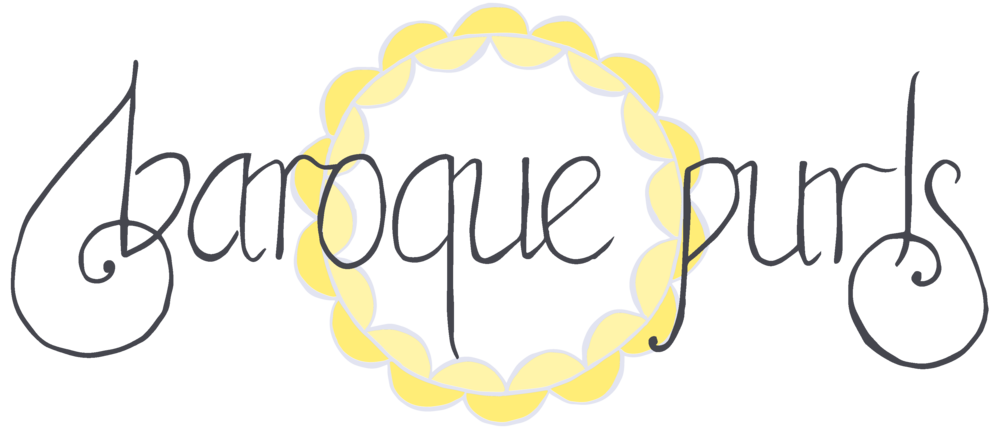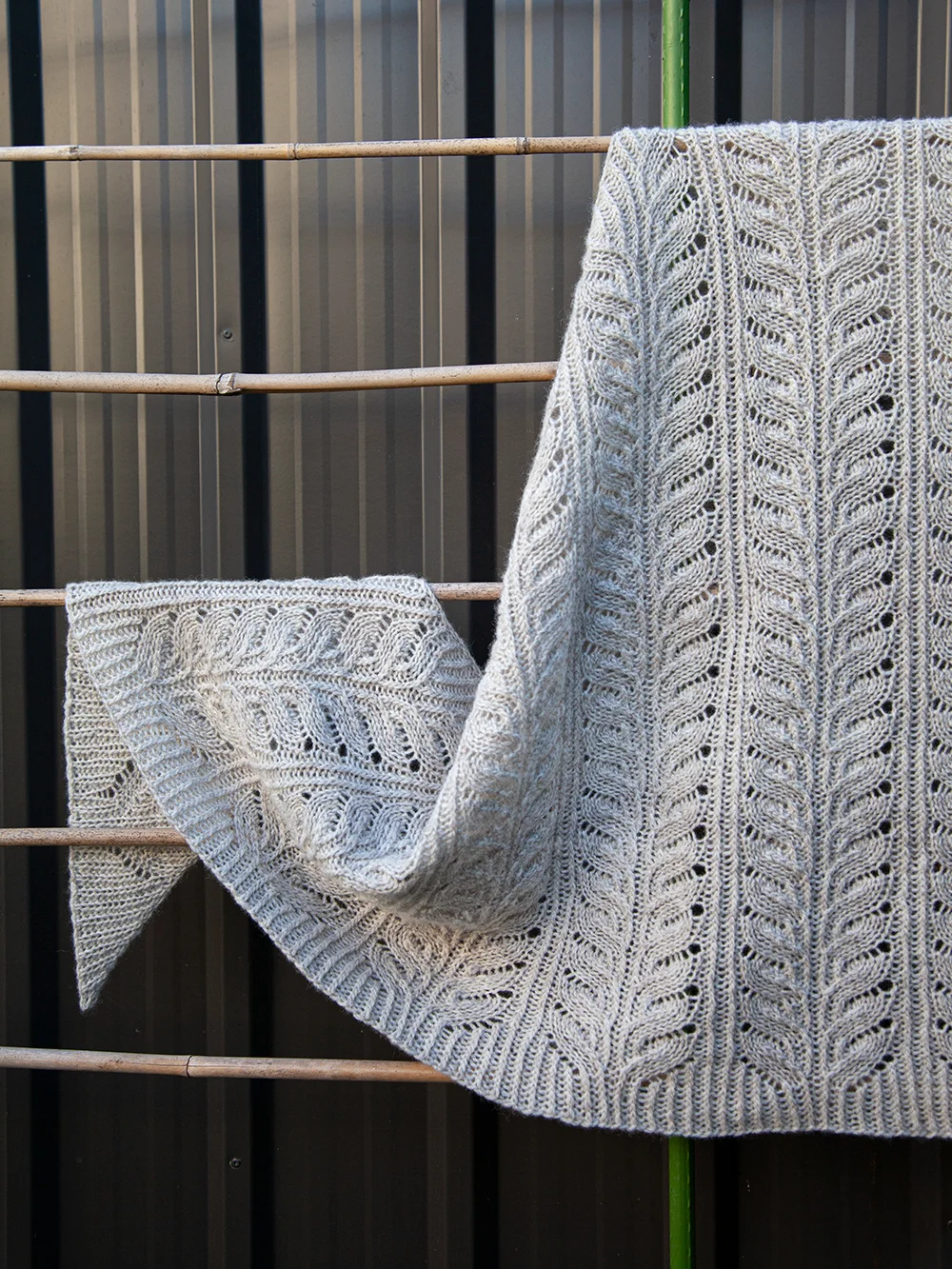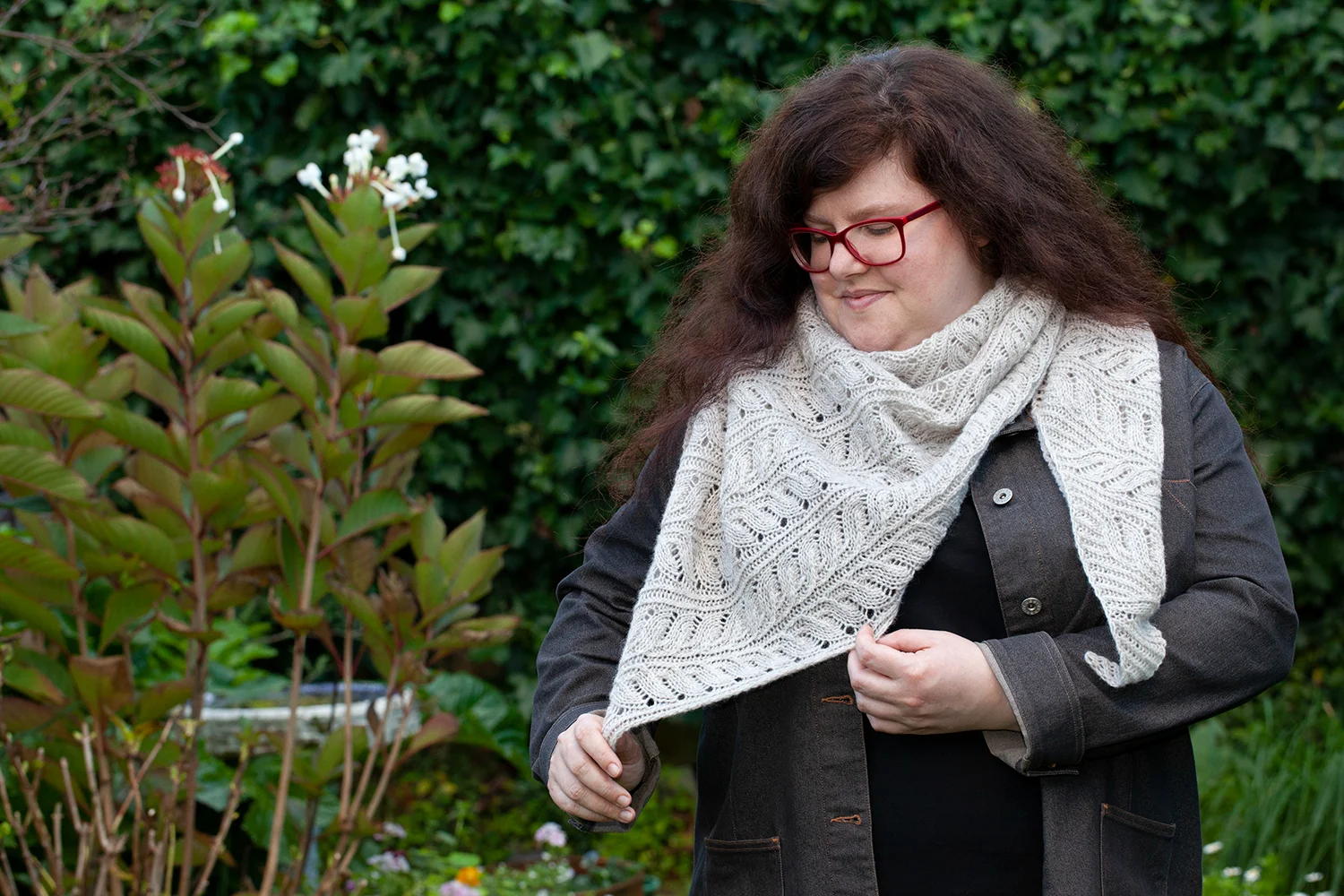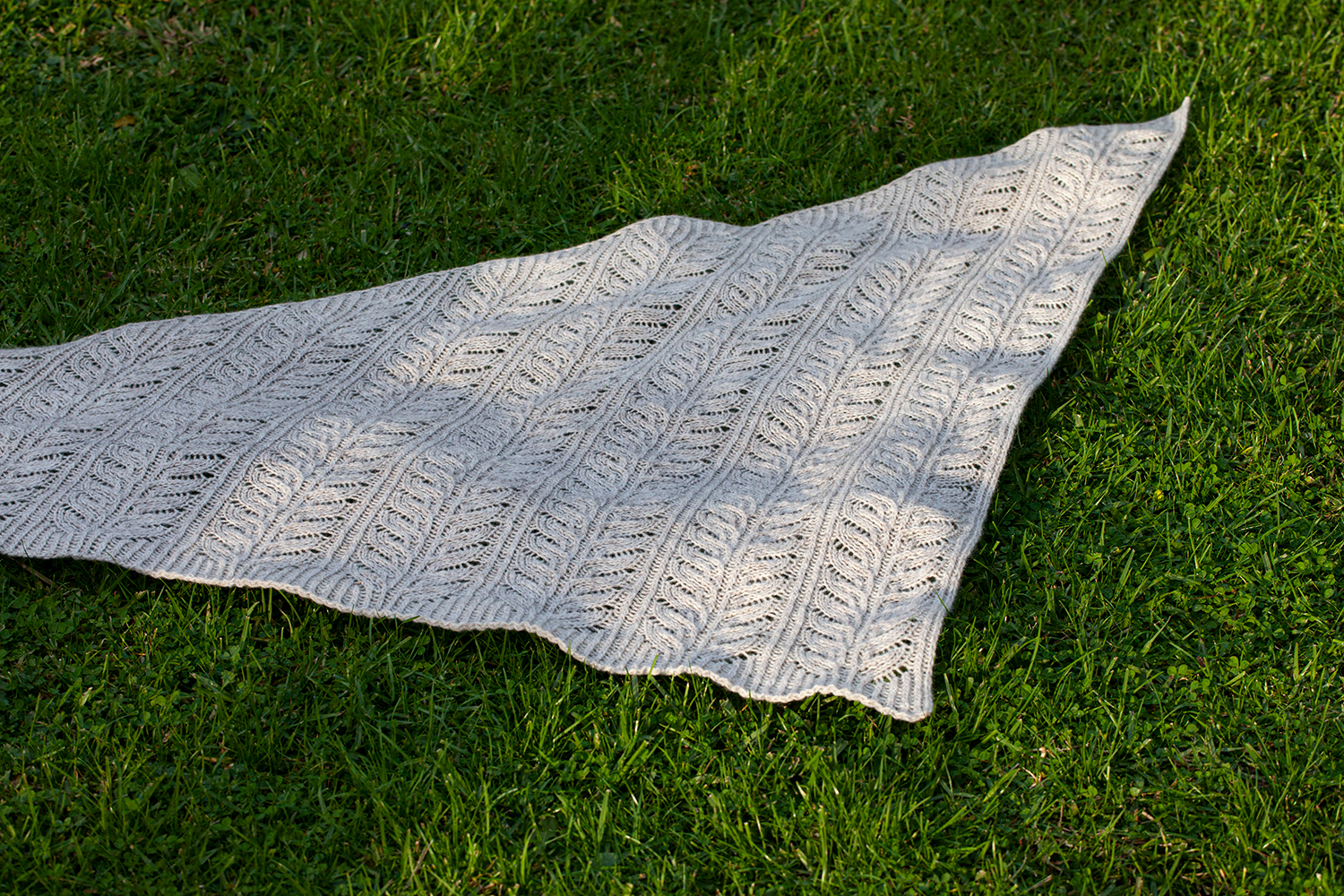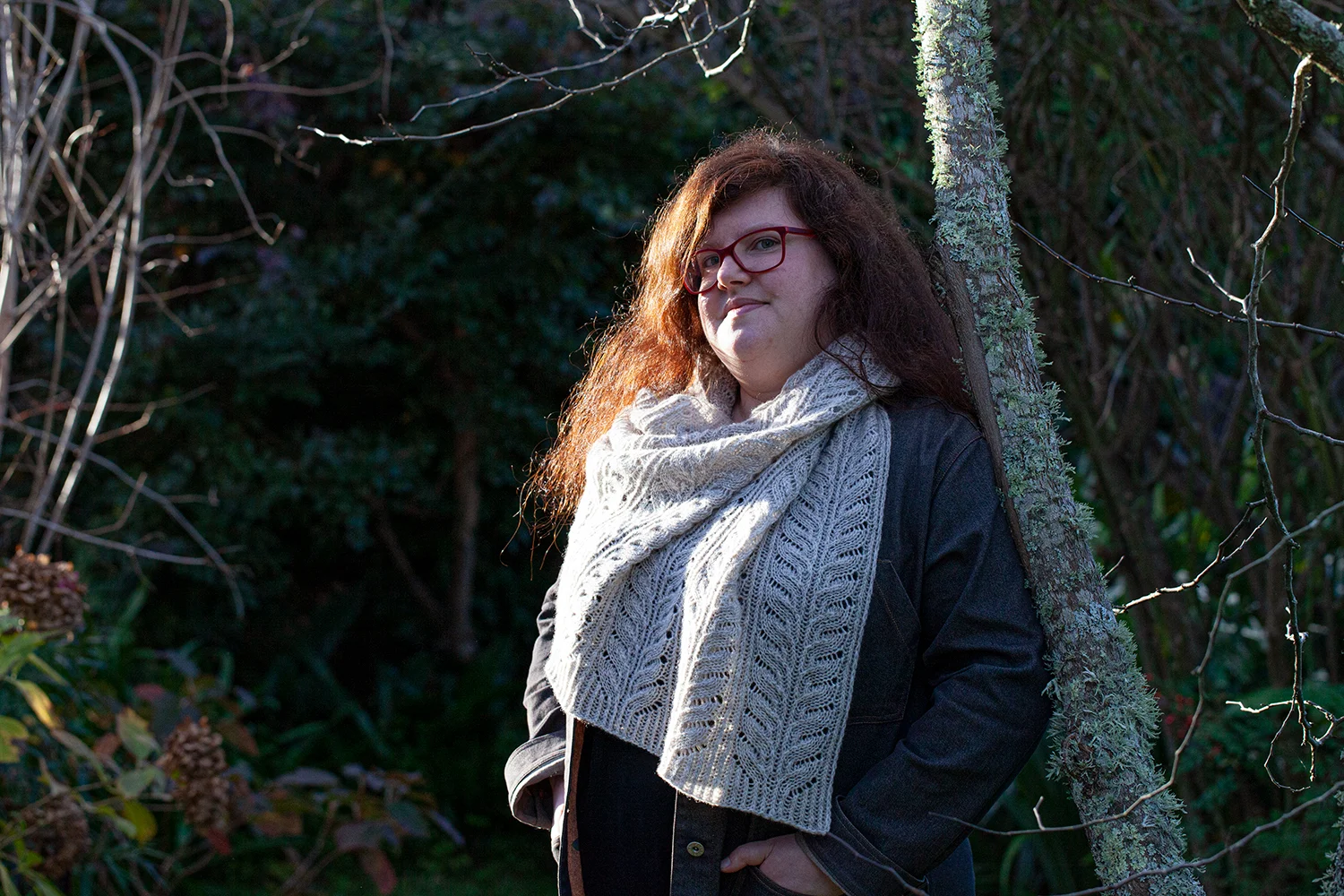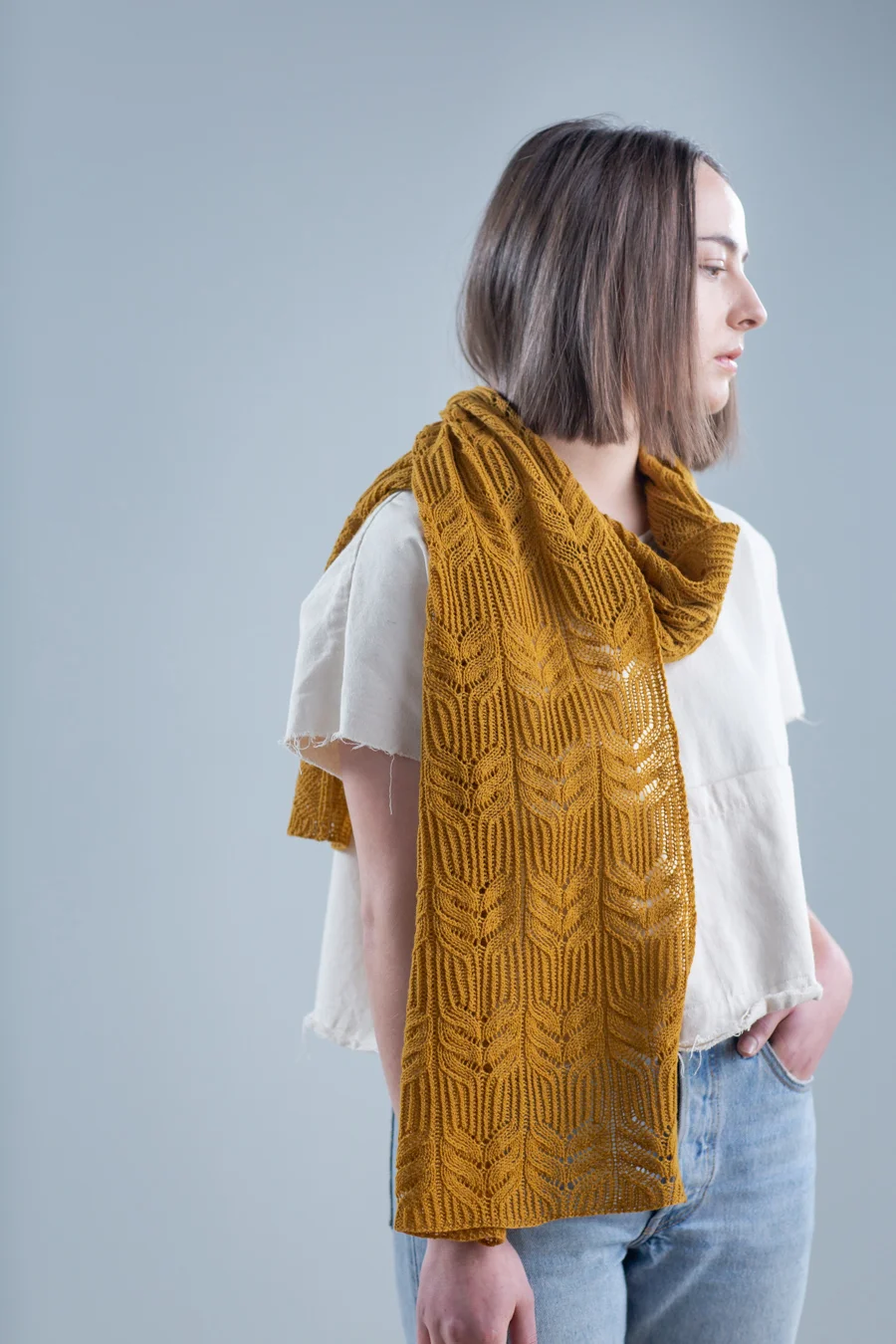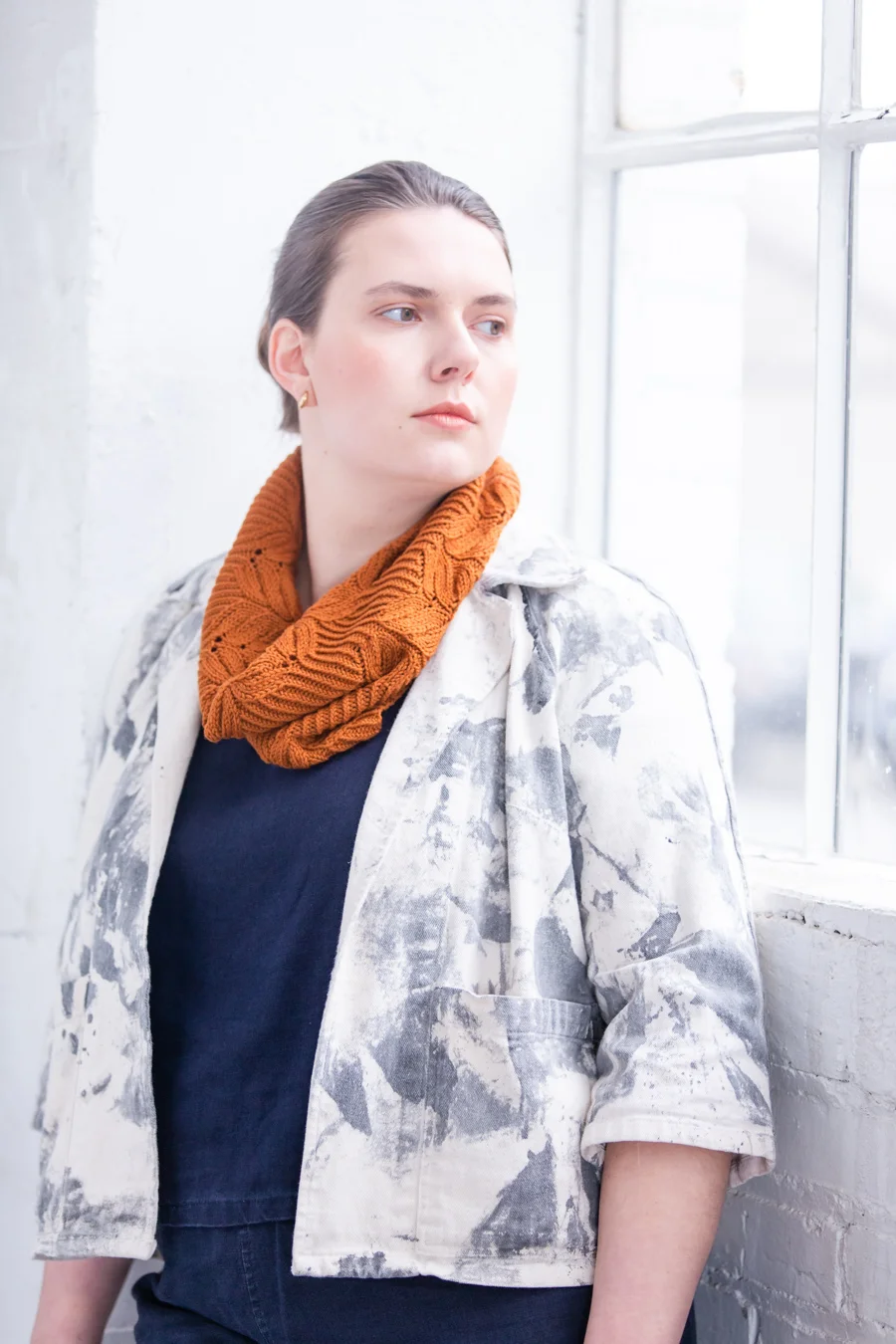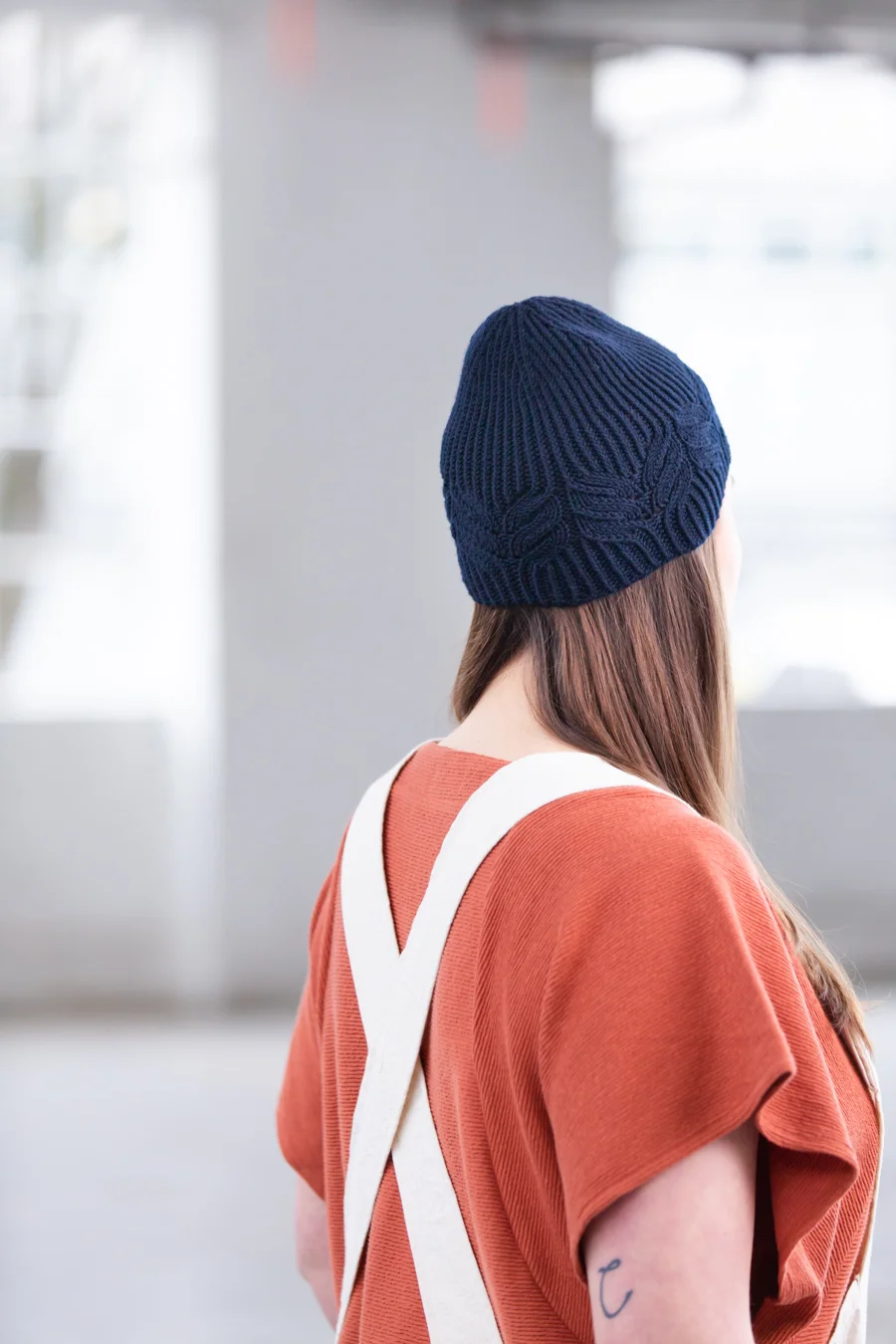When I came up with the idea for my Xerophyte Shawl (you can read about its inspiration here), I wanted to include bobbles at intervals in the stockinette fabric - but working hundreds of full-sized bobbles was more effort than I was honestly prepared to make. And so I was very happy to come across Sarah Wilson’s article for Interweave, 5 Ways to Work a Bobble, which includes a method for making mini-bobbles using a wrapped-stitch method sometimes known as the Estonian Button Stitch. This method has the advantage of producing a small, flattish bobble without needing to turn your work, and is much faster than any other bobble method I’ve tried.
Read MoreNew patterns: Orfeo Hat & Cowl
This pair of patterns has been almost a year in the making, and my obsession with stranded colourwork is still going strong! The Orfeo Hat & Cowl feature colourwork inspired by the decorative stamped motifs found in seventeenth-century books and music scores. I enjoy spotting all the little decorative elements when I’m looking through an old music score, finding something new to sing or checking a detail of an old favourite, and when I find a motif that has knitting-design potential I do a quick sketch and make a note of where I found it. The IMSLP database is a fantastic treasure trove of public-domain music scores, and it’s where I go to find most of my sheet music these days.
Warning: more music-historical geekiness ahead!
The motifs I used as the starting point for my Orfeo Hat & Cowl come from some early editions of music by Claudio Monteverdi, one of my top two favourite composers (the other is J.S. Bach). The same tiny, tiling motifs appear on the title page of Monteverdi’s opera L’Orfeo (1609) and his Vespro della Beata Vergine (1610), which were both published by Venetian music printer Ricciardo Amadino. You can see the motifs below, forming the border of a page.
Motifs which can be combined in various different configurations are brilliant for creating a stitch pattern, and the shape of these reminds me of elaborate lyres or c-clefs. To create my colourwork pattern I traced enlarged versions of the motifs onto squared paper and added clean straight lines to contain them. To me, the contrast between the elements creates movement and drama, and feels very baroque.
The yarn I chose for my samples is Outlaw Yarn’s Bohemia Sport (45% Polwarth, 45% Alpaca, 10% Possum; 183yds/167m per 50g skein). When I was still at the swatching stage for these designs I asked around on Instagram for recommendations for good yarn for stranded colourwork, and I’m glad I went with this suggestion. It’s soft and warm, the fuzzy halo helps the stitches ‘mesh’ well without obscuring the design, and it can be worked at a tight gauge, which is how I prefer my colourwork.
I used half a skein of each colour for the hat, and a little over one skein of each colour for the cowl - so if you’d like a matching set, two skeins of each colour will be plenty. The colours I picked are Parchment for the hat’s main/background colour (MC), Gaslight for the cowl’s MC, and Leadlight for the contrast/motif colour (CC) for both. Leadlight has unfortunately been discontinued since I knit my two samples, but the new colour Erebus is a great substitute - it’s a dark blue/charcoal shade, whereas Leadlight was plain black.
I chose the Twisted German Cast On for both the hat and cowl because it’s quite substantial as well as stretchy, but you can use any cast on you prefer for 1x1 ribbing, e.g. Tubular, Long Tail, Alternate Cable, etc. I used this tutorial to remind myself how to work the Twisted German method: Photo Tutorial: Twisted German / Old Norwegian Cast-On.
Once you get into the colourwork, there will be some rounds with longer floats which you will need to ‘trap’ on the reverse side. I found a few good tutorials for this, including Andrea Rangel’s Catching Floats in Colorwork, Dianna Walla’s trapping long floats in stranded colorwork, and Ann Kingstone’s Trapping Floats. It does interrupt the flow of your knitting, but I feel it’s worth it to tidy up the long floats so they won’t snag on things and pull your stitches out of place.
Orfeo Hat features:
a stranded colourwork beanie knit in the round from the bottom up
swirling colourwork motifs which grow out of the corrugated ribbing of the brim, and simpler abstract colourwork in the crown shaping
hat dimensions: 18”/46cm circumference and 8.5”/21.5cm length, to fit adult head sizes ranging from 19-22”/48-56cm head circumference
requires 101yds/92.5m of the main/background colour (MC) + 102yds/93.5m of the contrast/motif colour (CC) in sport- or fingering-weight yarn
pattern includes charted stitch patterns only.
Orfeo Cowl features:
a stranded colourwork cowl knit in the round from the bottom up
swirling colourwork motifs edged with corrugated ribbing
cowl dimensions: 27”/68.5cm circumference and 10”/25.5cm height
requires 216yds/197m of the main/background colour (MC) + 209yds/191m of the contrast/motif colour (CC) in sport- or fingering-weight yarn
pattern includes charted stitch patterns only.
The Orfeo Hat and Orfeo Cowl patterns are available on Ravelry and Payhip, both individually and as an ebook (with a reduced price per pattern).
How to work p2tog and ssp decreases
Most of my lace designs feature stitch patterns with ‘rest rows’, i.e. without increases or decreases on the wrong side (WS) rows (or similarly, every second round in a hat or cowl worked in the round). But two of my recent lace creations, the Beanstalk Shawl and Ensata Scarf, require working increases and decreases on every row. This is where the purled decreases p2tog and ssp come in, which are worked on the WS and look just like k2tog and ssk when viewed on the right side (RS) of the fabric. P2tog is the more straightforward of the two, while ssp involves a few steps.
Read MoreNew pattern: Beanstalk Shawl
Introducing my latest adventure in textured lace! The Beanstalk Shawl is a botanically-inspired triangular shawl in fingering-weight yarn. Its all-over lace pattern includes twisted stitches for crisp texture, and increases & decreases are worked on every row to create the gracefully-curving pairs of leaves.
The shawl’s stitch pattern grew out of the leaf-lace motif in my Ensata Scarf & Cowl and Hat designs (Ravelry links), which I couldn’t stop playing with further! I added more twisted stitches and stacked the leaves in unbroken columns, and through a lot of trial and error, found an elegant way of fitting the repeats into a triangular shawl shape.
The final effect is an abstract interpretation of growing vines or leafy plants, and makes me think of my Mum & Dad’s vegetable garden, which for its small size produces an awful lot of food. Their tomatoes are a particular point of pride, and I admit I actually enjoy their brussels sprouts (gasp)!
Do you ever find yourself enchanted with a certain type of stitch pattern? The combination of leafy lace and twisted stitches has been haunting me for a while now, and I don’t think I’m quite done yet - I still have a few more ideas charted out and ready to swatch…
The yarn I used to knit up my sample is Maniototo Wool’s Rough Ridge 4ply (90% Merino cross wool, 10% coloured Polwarth wool; 394yds/360m per 100g skein). This is an airy woollen-spun yarn with gentle heathering as a result of the inclusion of naturally coloured wool in the mix. I used two skeins of the undyed yarn for my shawl, but if you’re a colour-lover Mary has overdyed a few special shades to coincide with the launch of the Beanstalk Shawl pattern.
Techniques involved in the pattern include working lace increases and decreases on RS and WS rows (I have a tutorial coming soon for the WS decreases), and knitting and purling through the back loop to form the twisted stitches. I strongly recommend using stitch markers between repeats of the leaf-lace pattern, to help you keep track of the increases and decreases in the WS rows. Marking out the repeats also helped me get fully into the rhythm of the stitch pattern, which is worked over 6 rows.
Beanstalk Shawl features:
triangular shape, worked from one point to the triangle’s opposite side
all-over textured lace pattern including increases and decreases on every row
twisted stitches add crisp definition to the leafy texture
requires two skeins of fingering-weight yarn (shown in Maniototo Wool’s Rough Ridge 4ply), and 10 stitch markers
suitable for solid, semi-solid, or gently-speckled fingering-weight yarn
one size, easy to alter by changing the number of repeats
pattern includes full written instructions as well as charts.
Find out more about my Beanstalk Shawl pattern, including Ravelry and Payhip purchase options.
New patterns: Ensata Scarf & Cowl and Ensata Hat
I hope you’re in the mood for some texture and lace, because my Ensata Scarf & Cowl and Ensata Hat have just been published as part of Brooklyn Tweed’s Wool People 13! This is my fourth time contributing to Wool People, which is BT’s annual collection in collaboration with guest designers.
The stitch patterns in my Ensata designs are inspired by the gently curving pairs of leaves on my moth orchids. The working title at the time of submitting my ideas was the slightly clumsy ‘Orchid Leaves’, but we switched to ‘Ensata’ after the elegantly curved petals of the Japanese Iris, Iris ensata. The twisted ribbing, which flows into and out of the lace, provides a textural contrast and echoes the structure of a grand domed greenhouse.
Photo by Brooklyn Tweed
The scarf is knit flat from end to end, and the cowl, which is included as a variation together with the scarf pattern, is worked in the round from the bottom up. The hat, available as a separate pattern, is also worked in the round from the bottom up. If you’re not a fan of knitting lace on both right-side and wrong-side rows, the cowl or hat might suit you better than the scarf. I know I found these stitches much more straightforward to work in the round!
The Ensata Scarf has been designed for either laceweight or fingering-weight yarn, and is shown here in Brooklyn Tweed Vale in the colourway Klimt. You will need 3 skeins of Vale or 6 skeins of Peerie to knit the scarf. The cowl and hat are both designed for fingering-weight yarn, and are shown in Brooklyn Tweed Peerie in Patina and Fleet (respectively). You will need 2 skeins for the cowl and 1 for the hat.
Both Vale and Peerie have wonderful springiness and stitch definition, which make them ideal for showing off knitted texture. I love the way the twisted ribbing almost looks like it’s been carved into the surface of these knits.
Photo by Brooklyn Tweed
Ensata Scarf & Cowl features:
a delicate scarf knit flat from end to end, and a short cowl knit in the round from the bottom up
alternating bands of lace and twisted ribbing, with organic transitions between the two
scarf dimensions: 68” [172.5cm] in length and 15½“ [39.5cm] width
cowl dimensions: 26¾“ [68 cm] circumference and 12” [30.5 cm] height
scarf requires 1070 yards of laceweight or 1065 yards of fingering-weight yarn
cowl requires 375 yards of fingering-weight yarn
pattern includes charted stitch patterns only
pattern includes both scarf and cowl versions.
Ensata Hat features:
a stretchy beanie knit in the round from the bottom up
a ring of lace contrasts with the all-over texture of twisted ribbing and clean lines of the crown shaping
hat dimensions: 17¾“ [45 cm] in circumference and 8½” [21.5 cm] length, to fit adult head sizes ranging from 19-23” [48-58.5 cm] circumference
requires 163 yards of fingering-weight yarn
pattern includes charted stitch patterns only.
Photo by Brooklyn Tweed
You can purchase the patterns on Ravelry, or from Brooklyn Tweed’s website (Ensata Scarf & Cowl, Ensata Hat). A kit including the Scarf & Cowl pattern and three pre-wound skeins of Vale is also available. And be sure to check out the always-beautiful Lookbook for the collection!
